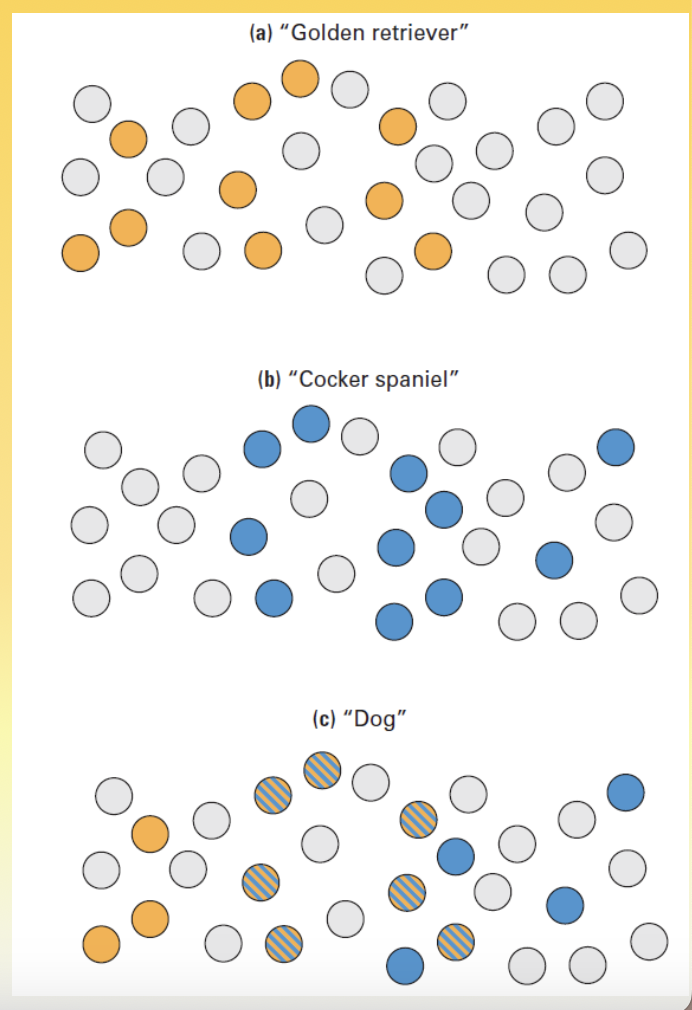Psychology of Learning Theories
1/20
There's no tags or description
Looks like no tags are added yet.
Name | Mastery | Learn | Test | Matching | Spaced |
|---|
No study sessions yet.
21 Terms
Aristotle
Associationism
proposed that memories are formed through associations
learn through experience
make links/associations between things
associations are formed through 3 principles: contiguity, frequency, similarity
contiguity —> experiences near each other in time/space are joined together
more likely to associate things when they are presented together
frequency —> experiences often repeated & connected more strongly
similarity —> experiences similar to one another are connected
Plato
Nativism
humans shaped primarily by their biological inheritance (nature)
proposed we are born with innate differences in skill & talent, & suggested sorting by quality soon after birth
inborn, using logic
Descartes
Dualism
mind & body are 2 separate entities each governed by separate laws
“I think therefore I am”
believed most knowledge was innate due to inner working of the machine
most closely alight with nativist school of thought
knowledge comes to you through your thinking abilities
can’t trust your senses
Locke
Empiricism
knowledge is gained through the senses —> evidence-based, observable
you know something is because you experienced it
proposed that we are born as blank slates (tabula rasa), completely equal & without innate knowledge, and that all out habits and skills are due to experience
come into the world an empty vessel waiting to be filled up with stuff —> this happens through experience
mostly closely aligned with associationism
can’t trust your logic
Behavioral perspective on learning/memory
behavior cause: external environment
knowledge is gained empirically
psychology should study not only observables responses, not unobservable “mental” processes
Charles Darwin
Evolution
theory that species can change over time, and that all existing species are descendants of common ancestors
idea proposed by Erasmus Darwin & others as the study of natural world revealed striking similarities between distinct species of animals
Natural selection
heritable traits that provide reproductive advantages become more common in a population, leading over time to changes in existing species & even the evolution of a new species
mechanism of evolution
behaviors can evolve as well as traits/characteristics
aligned with nativism
James
Rule of Mind
proposed that experiences link ideas in the mind
remembering one idea would spread along links, retrieving a complex episode
associationism
link together different elements
remembering one thing can unlock another memory because they are linked together
proposed these links would be physically forms in the brain, providing an early link between psychology & neuroscience
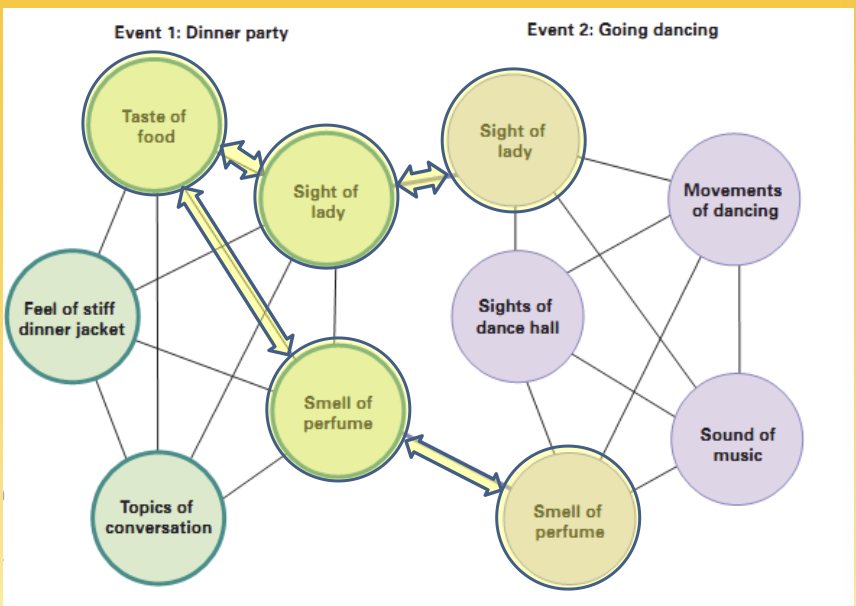
Ebbinghaus
Founder of experimental psychology
interested in how quickly you forget things
studied memory in an experimental way —> actually doing research
used himself as a test subject
was first to study memory in a distinctly modern & scientific way
empirical — actually collected data
experimental — manipulated an independent variable to observe outcome on a dependent variable
quantitative — expressed observation numerically
studied lists of nonsense words (ie. bap, kep, dak)
simple, effect design
learn the list (new memory formed)
delay
test for memory
relearn same list
dependent variable: savings
time to learn list second time/time to learn first time
higher savings = good memory
0 savings = list completely forgotten
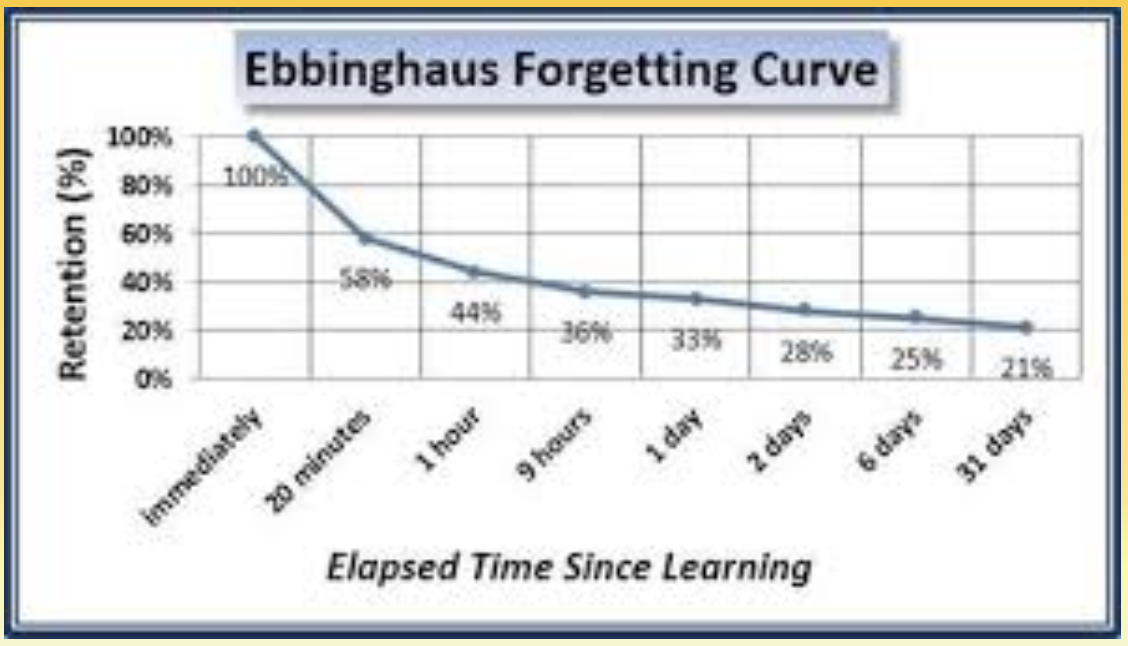
Pavlov
Behaviorism
environment shapes behavior through associations of events with one another
classical conditioning —> learning based on associations between events (anticipation)
studied dogs & salivation (especially in relation to food & things associated with food)
dogs learned to associate bell with food, leading to salivation only at the sound of the bell
used classical conditioning to experimental study laws of association
classical conditioning: learn to associate 2 stimuli or 2 events such that one stimulus elicits a response originally only elicited by the other stimulus
involuntary, automatic process (unconscious)
enables us to learn to anticipate important events
learn to anticipate arrival of a very important event
classical conditioning = experimentally testing associationism
contiguity - association between bell & food stronger when both tend to occur together
frequency - repeated pairings of bell & food increase strength of association, with characteristic learning curve
similarity - salivation responses will generalize to stimuli similar to bell (ie. tone)
Watson
Behaviorism
only subject matter in psychology was observable responses/behavior
didn’t want to study internal thought processes
radical behaviorist —> no room for thinking about any internal processes
claimed goal of psychology was to control & predict behavior
Little Albert study
Thorndike
behaviorism
instrumental conditioning —> learn to associate behavior with consequences that follow such that environment shapes behavior through consequences of action
what we call operant conditioning today
Law of Effect = behaviors followed by satisfying consequences become more likely to recur; behaviors followed by unsatisfying consequences become less likely to recur
hope can be a reward
Skinner
behaviorism
operant conditioning - learning based on consequences of actions
developed schedules of reinforcement
radical behaviorist
behavior modification - increasing or decreasing a certain behavior
Hull
behaviorism
developed mathematical model of learning
explains how much learning would occur on any given trial or in any given situation
focused on stimulus-response (S-R) learnings
included concrete variables & move subjective variables (ie. motivation, desirability)
Drive Reduction hypotheses
Tolman
Father of cognitive psych
to understand behavior have to take into account purpose & plan of behavior
all behavior directed towards a goal (not just reactions to environmental stimuli)
research showed stimulus to response misses something important
rats trained on a maze can find novel ways to the goal (food) when encountering an obstacle
since route was novel, could have been no prior association between stimulus (food) & response (novel route)
rat wants something (food)
rat makes cognitive map (mental layout) of maze
cognitive map = type of mental representation serves an individual to acquire, code, store, recall, & decode information about relative locations & attributes of phenomena in everyday or metaphorical spatial environment
cognition involved in behavior
rats wanted something —> make cognitive map
motivated to show what was learned

Latent learning
Tolman + Bandura
learning not the same as performance
rats when through one maze trial/day
one group found food every time (red line)
second group never found food (blue line)
third group found food day 11 (green line)
motivational
shows us learning happening previously
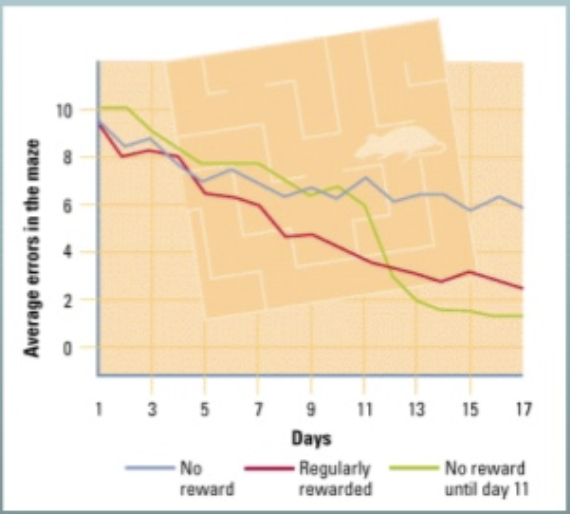
Bandura
Bobo doll study
observational learning/modeling
A — attention (pay attention to model’s behavior)
R — retention (remember model’s behavior)
R — reproduction (do what model did)
M — motivation (key to understanding latent learning)
observational learning = learning by watching others
latent learning displayed behaviorally when you are motivated
Gestalt Psychology
cognitive approach
gestalt = whole
whole is more than sum of its parts
perceptual aspects — continuity, enclosure
Estes
cognitive approach
behaviorist
mathematical model for cognitive processes
stimulus-response relationships not so simple
stimuli are complex
stimulus sampling theory = over many learning trials most elements of a stimulus would be associated with the response
need random variation for learning
thoughts influence our behavior
ie. do we turn off alarm, go back to sleep, hit snooze
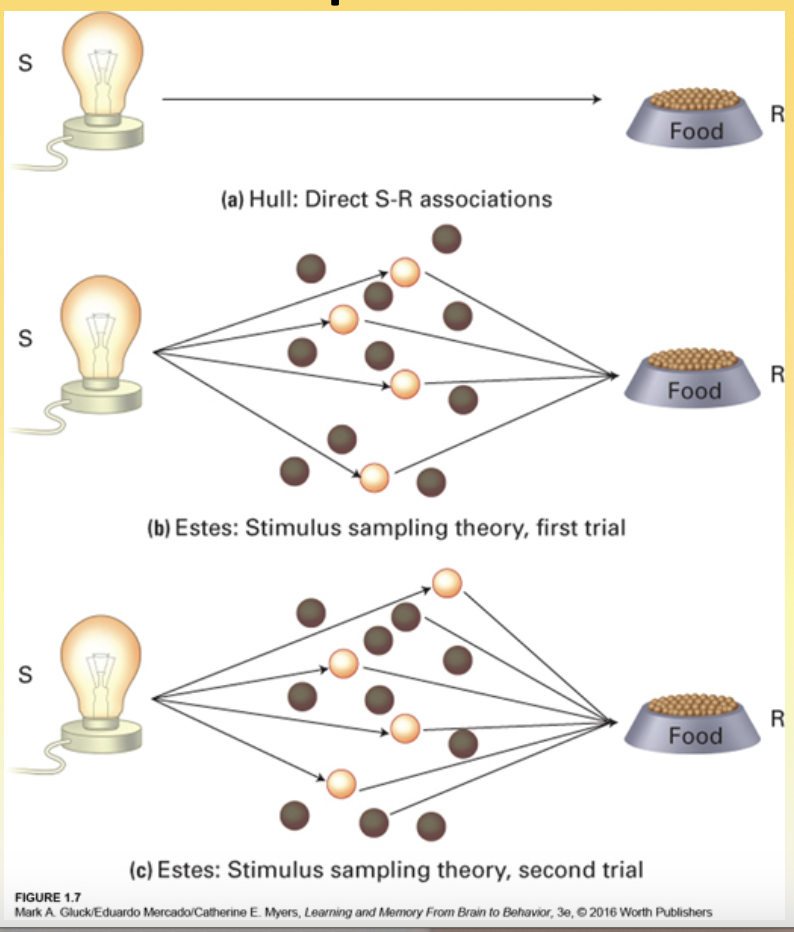
Bower
cognitive
mathematical psychologist
insight = gain understanding, figure it out
one-step model of learning
learning happens in one step & achieve insight
once you figure out something out, you got it
re-interpreted classic “learning curve” of behaviorists
looks gradual because average of many individuals
in many cases, individual data show dramatic switches from poor to good performance at a single trial
realized group data were masking distinctly mental processes of insight
exemplifies need to go beyond stimulus —> response & think about mental processes
need cognitive abilities to be able to learn
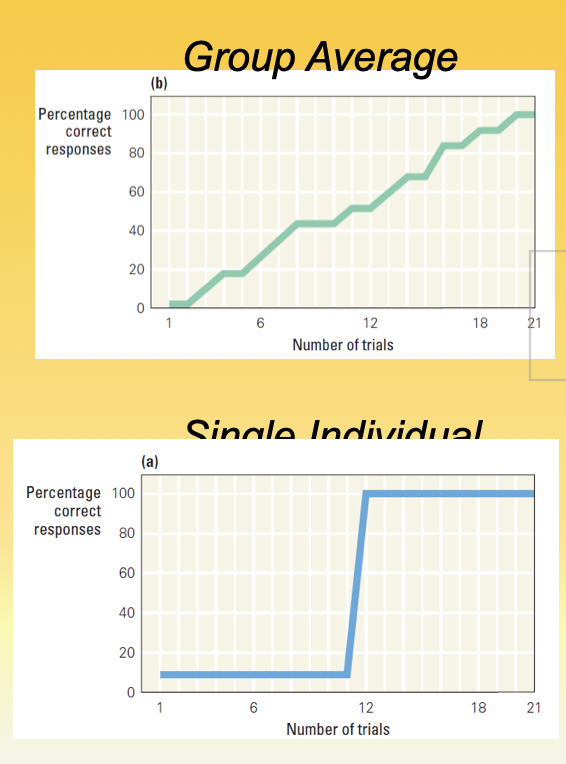
Miller
cognitive
magical number 7
tested digit span
read list of letters, short delay, try to recall whole list
digit span limits represent overload of memory system with capacity of 7 ± 2 items
digit span assesses short-term memory (related to IQ)
Miller quantified cognitive processes
showed there are limits to cognitive abilities
Rumelhart
cognitive
believe cognition & cognitive processing was network of connections between simple processing units called nodes
networks = connectionist models
information is coded as an activation pattern distributed across many different nodes —> distributed representation
